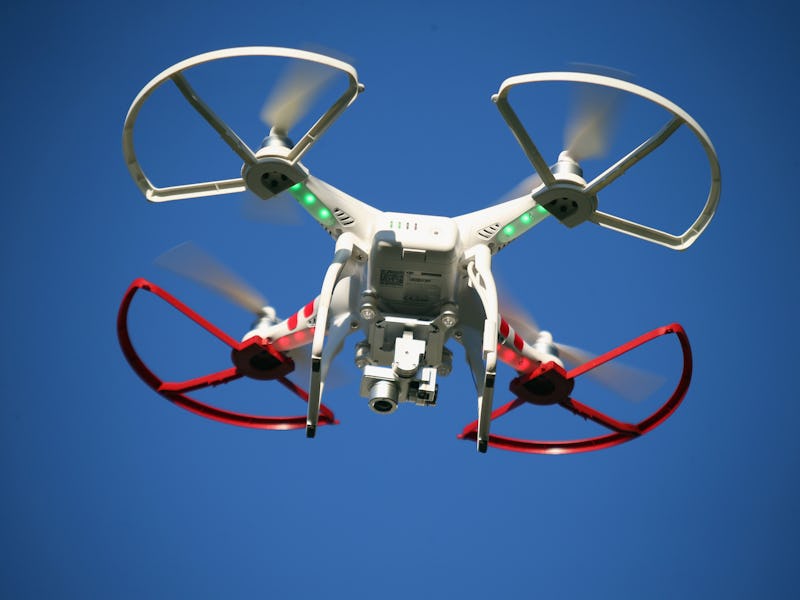The Shadow of U.S. Drones Will Be Half the Size of Central Park by 2020
Seven million drones can blot out the sun. Kind of.

Over the next four years, the commercial and hobbyist drone fleet will grow rapidly. By 2020, there will be two unmanned aerial vehicles for every hundred people in the United States — so sayeth the Federal Aviation Administration in a recent forecast. For those keeping track, that’s 7 million drones, up from the current 2.5 million. Because humans are bad at large numbers — thank our evolutionary ancestors for that one — it’s hard to get a handle on what that really means. So let’s think about scale instead. If all those drones were hovering side by side, how big a shadow would we be talking about?
If we want to get all the drones flying in tandem, we’ll have to make some assumptions: To make this easier, we’ll imagine that each drone is the popular DJI Phantom 3. That’s certainly not the case — the Phantom is common now, but by 2020, the model will be 5 years old — and there are hundreds of other drone options, and likely better ones for non-hobbyists. (The FAA predicts commercial drones will make up 2.7 million of the seven million devices.) The Phantom 3 is, however, a fairly average sized drone. It’s likely that most drones will be fighting in the middle weight category even if micro drones and massive, perpetually airborne solar-powered drones become more common.
Let’s also stipulate that flying 7 millions drones next to each other is a terrible idea.
Now, let’s get to sun-blotting. Say a Phantom, which is vaguely square-ish in shape, with a diameter of 23 inches, casts a roughly three-square-foot shadow. Side-by-side at 400 feet up (where there may be some penumbral distortion from the sun, but it’s likely negligible), they’d collectively cast a shadow over three-quarters of a square mile. That’s enough area to cover about 500 acres — cloaking more than half of Central Park in darkness, or more exotically, the entire nation of Monaco.
An off-the-cuff guesstimation: The total drone eclipse would last about nine minutes before batteries started dying and all hell broke loose.